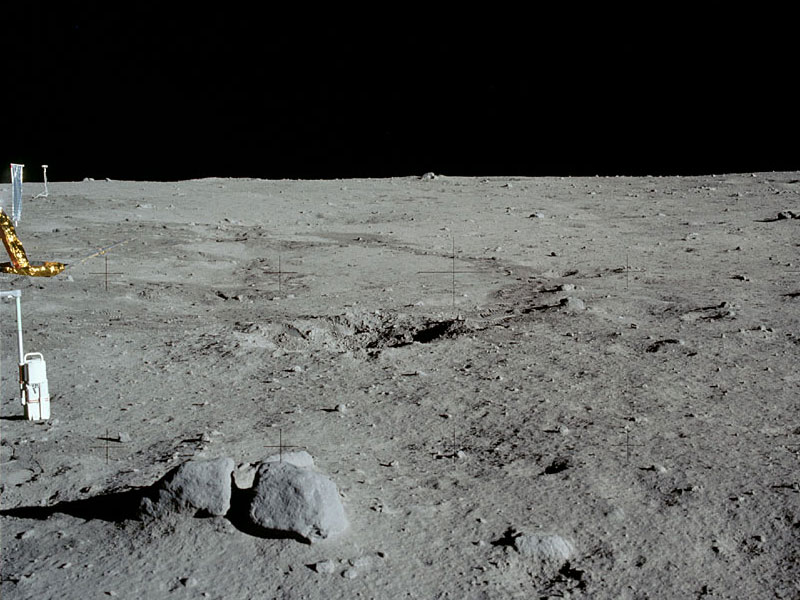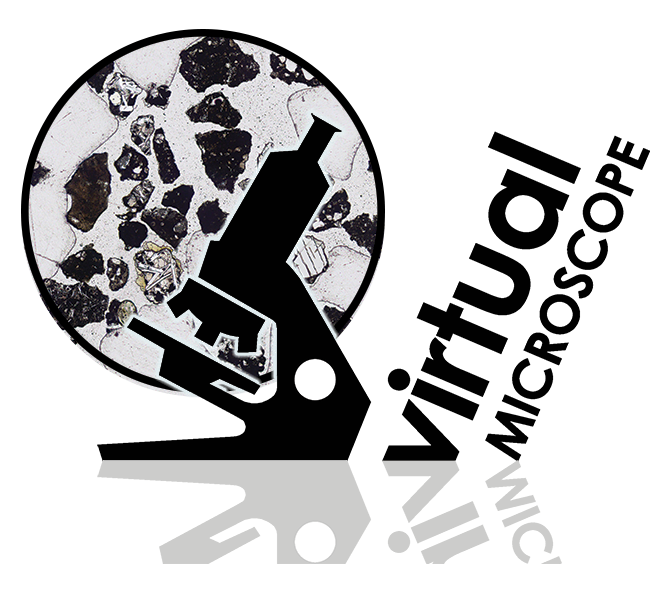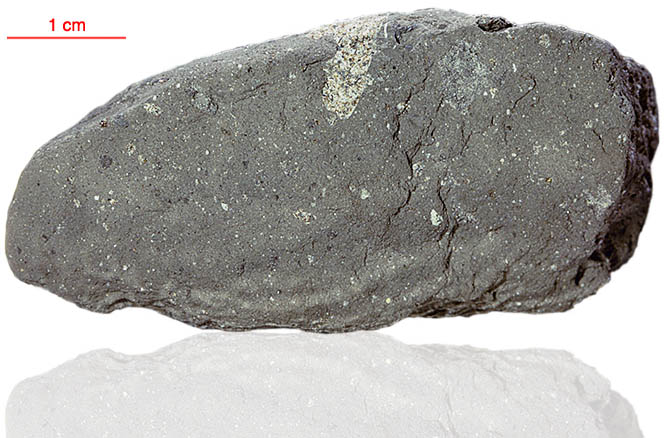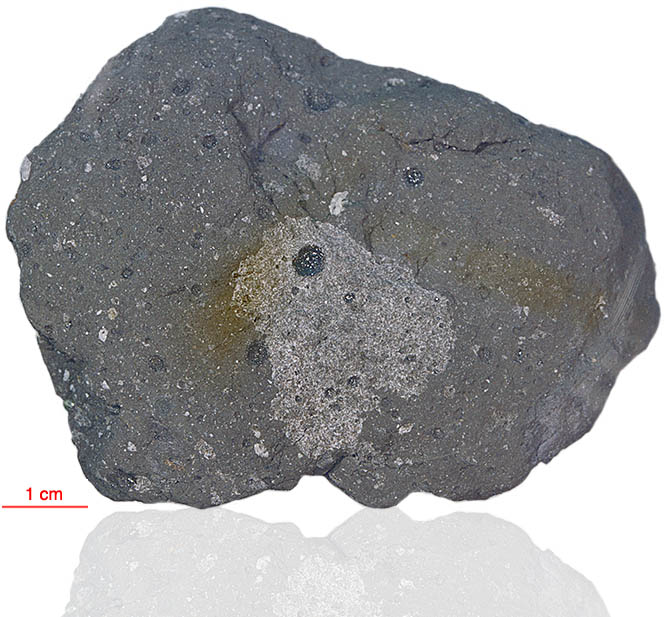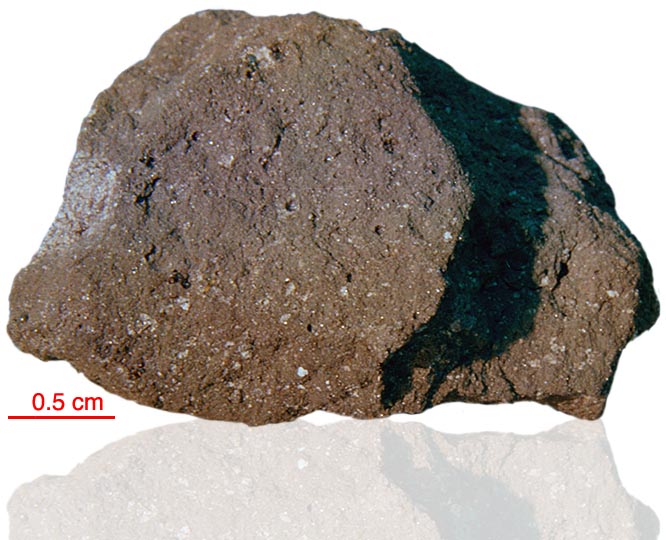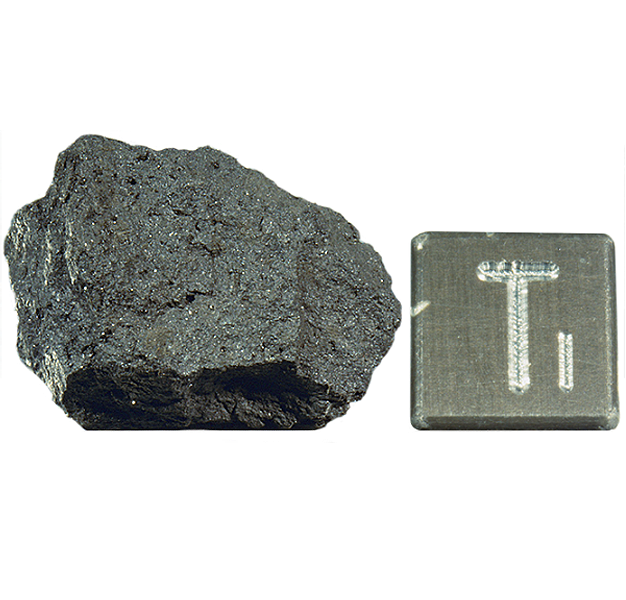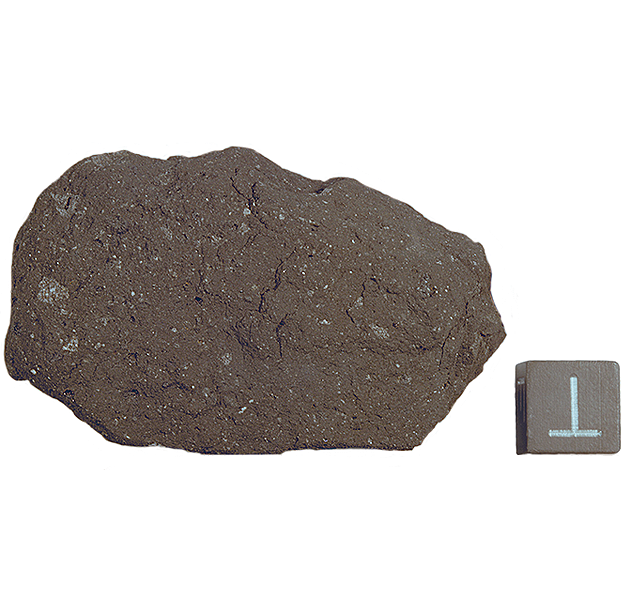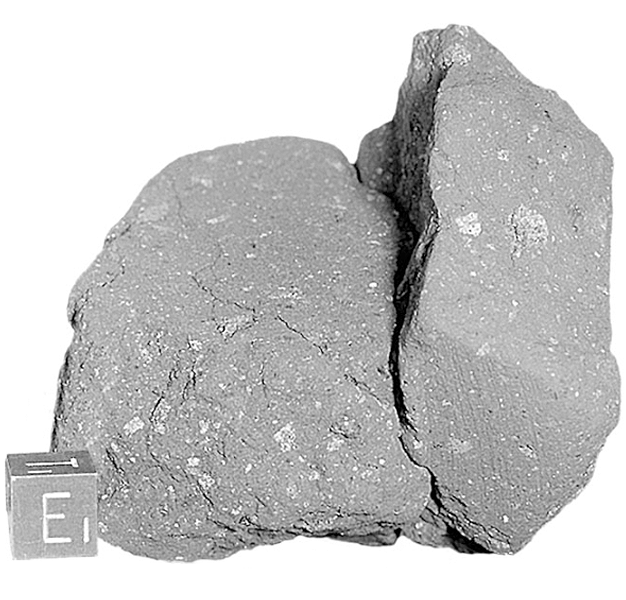
Fact sheet
Sample 10046 is a multi-clast breccia held together by a matrix of glass formed during a large meteorite impact. Small zap pits on the surface of the hand specimen mark the position of micrometeorite impacts. This specimen was collected by Neil Armstrong on 20 July 1969 during Apollo 11 – the first manned mission to the Moon.
In thin section the fine-grained matrix glass appears black both in plane polarised light and between crossed polars. The breccia contains mineral fragments ranging from a few microns across up to over 100 microns across, and rare brown volcanic glass spherules. The sample also contains larger fragments of glass and rock with a range of textures and grain sizes, and also several reworked fragments of earlier breccias.
Further details of this and other Apollo samples are here: http://curator.jsc.nasa.gov/lunar/
The Apollo 11 samples create an iconic collection since they were the first rocks collected by humankind that were returned to Earth from another solar system body. The Apollo 11 team collected and returned 22 kg of rock and soil samples.
Apollo 11 launched from Cape Kennedy on 16 July 1969. An estimated 530 million people watched Armstrong's televised image and heard his voice describe the event as he took "...one small step for a man, one giant leap for mankind" on 20 July 1969.
